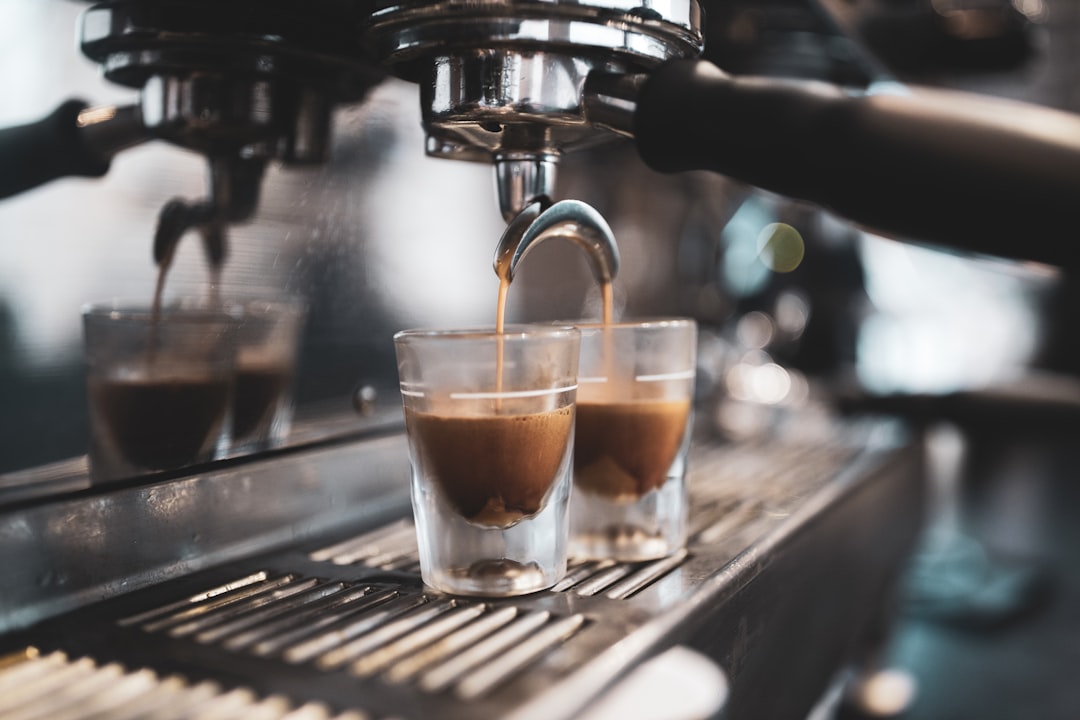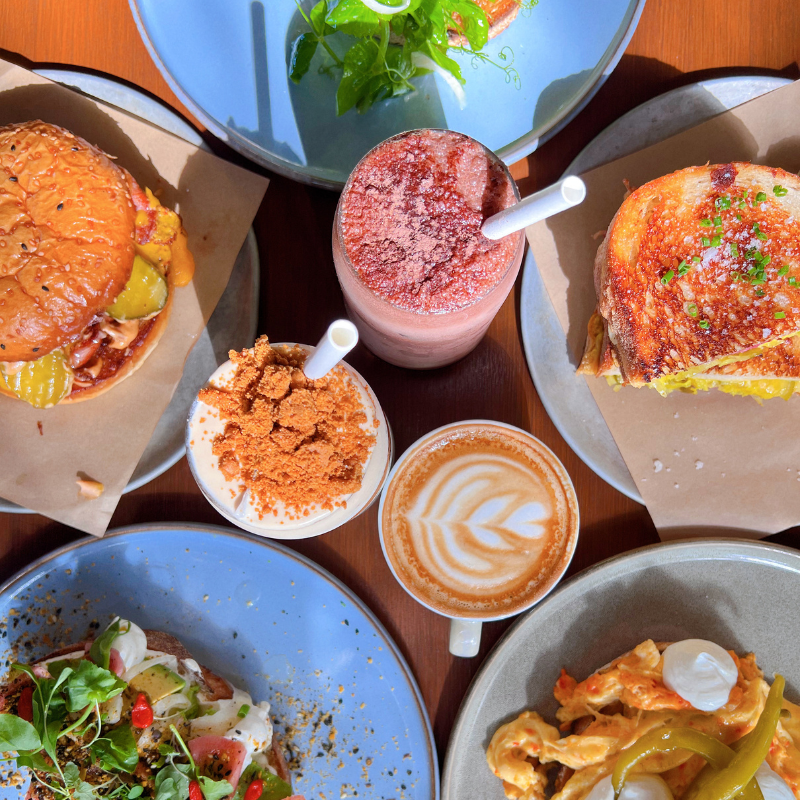Cappuccino 101—Everything You Need to Know

The Perfect Morning Pick-Me-Up
What is cappuccino might seem like a simple question, but this beloved coffee drink has layers of complexity that match its signature foam. At its heart, a cappuccino is an espresso-based beverage made with equal parts espresso, steamed milk, and velvety milk foam, traditionally served in a 150-180ml cup.
Quick Answer: What is Cappuccino?
- Base: Single shot of espresso (25ml)
- Milk: Steamed milk (equal portion to espresso)
- Foam: Thick layer of milk foam (minimum 1cm depth)
- Size: Traditional 150-180ml cup
- Ratio: 1:1:1 (espresso:milk:foam)
- Temperature: Served hot at 55-65°C
- Origin: Italian coffee culture, named after Capuchin monks
The cappuccino stands out from other milk-based coffee drinks because of its distinctive foam layer and balanced flavour profile. Unlike a latte with its thin foam or a flat white with microfoam, the cappuccino's thick, airy foam creates a unique texture that coffee lovers have cherished for generations.
As someone who's been immersed in the hospitality industry for over 20 years and now owns Flinders Lane Cafe here in Maroochydore, I've poured thousands of cappuccinos and witnessed how what is cappuccino remains one of the most common questions from coffee newcomers. My experience has taught me that understanding this classic drink opens the door to appreciating coffee culture as a whole.
What Is Cappuccino?
What is cappuccino at its core? It's beautifully simple yet wonderfully complex. A cappuccino is an espresso-based coffee drink that brings together three equal parts: rich espresso, creamy steamed milk, and that signature thick layer of milk foam that makes your morning feel special.
The World Barista Championship has some pretty specific rules about what makes a proper cappuccino. They say it should be between 150ml and 180ml in total volume, with at least 1 centimetre of foam depth. This isn't just coffee snobbery – these measurements actually create the perfect balance that makes a cappuccino taste so good.
What makes a cappuccino different from other coffee drinks is how it keeps its distinct layers. Unlike a latte where everything blends together, a cappuccino maintains its structure. You get that bold espresso hit at the bottom, followed by the sweet creaminess of steamed milk, and then that gorgeous foam layer that holds all the aromas and creates that velvety texture when you take your first sip.
Here at Flinders Lane Cafe in Maroochydore, we stick to those traditional 150-180ml cups because they're the secret to getting everything just right. When you use the proper size, none of the components fight for attention – the espresso stays bold, the milk adds just enough sweetness, and the foam creates that perfect coffee-to-milk ratio that cappuccino lovers have been enjoying for generations.
The magic happens when all three elements work together. The espresso provides the coffee foundation and caffeine kick, the steamed milk brings body and natural sweetness, and that thick foam layer? It's not just for show – it actually improves the aroma and gives you that satisfying texture that makes each sip feel like a small celebration.
What is cappuccino explained in one sentence
What is cappuccino in the simplest terms? A cappuccino is where bold espresso meets creamy steamed milk and gets crowned with a thick layer of velvety foam, creating the perfect balance of strength, sweetness, and texture that makes your morning worth waking up for.
From Monks to Microfoam: History & Culture
The story of what is cappuccino begins in an unexpected place—a monastery. The beloved drink gets its name from the Capuchin friars, whose distinctive brown hooded robes perfectly matched the colour of coffee when milk was first stirred in. It's quite charming to think that our morning ritual has such humble, spiritual beginnings.
The cappuccino's journey through history is fascinating. Back in 17th-century Vienna, coffee houses served a drink called "Kapuziner"—though it bore little resemblance to what we know today. The Viennese Kapuziner Kaffee, first documented in 1790, was quite the elaborate affair with boiled coffee, sugar, spices, cream, egg, and whipped cream. Imagine ordering that at your local café!
The Italian espresso-based cappuccino that we recognise today didn't actually emerge until somewhere between 1910 and 1930. Even then, it originally featured whipped cream and spices before evolving into the frothed milk version we love. The change shows how coffee culture adapts and improves over time.
The 1950s marked a period for cappuccino culture with the widespread adoption of proper espresso machines. This era, often called the "Gaggia era" after the famous espresso machine manufacturer, saw the cappuccino evolve into its modern form. The drink's popularity spread beyond Italy's borders, reaching British coffee culture and eventually North America by the mid-1990s as upscale coffee houses became more common.
Italian coffee culture has some strict rules about cappuccino consumption that might surprise you. Traditionally, it's only consumed in the morning—usually before 11:00 am—as Italians consider it too heavy for later in the day. They believe milk-based coffee aids digestion and should be enjoyed early. Breaking this rule might earn you some curious looks from traditional Italian baristas!
Here in Australia, our café culture acceptd the cappuccino during the post-war European migration, particularly through Italian communities. The drink became a cornerstone of Australian coffee culture, though we've made it our own with slightly larger serves than the traditional Italian size and a greater emphasis on beautiful latte art.
At Flinders Lane Cafe in Maroochydore, we honour this rich history while serving cappuccinos that suit our local community's tastes. Understanding what is cappuccino means appreciating not just the drink itself, but the centuries of cultural evolution that brought it to your morning table.
Anatomy, Variations & Comparisons
Understanding what is cappuccino means looking beyond the surface to appreciate its carefully crafted anatomy. The magic starts with that classic 1:1:1 ratio—espresso, steamed milk, and foam—but the real artistry lies in creating perfect microfoam. This isn't the chunky, bubble-filled foam of yesteryear, but rather a velvety, paint-like texture that's smooth enough for latte art yet substantial enough to maintain that signature cappuccino crown.
At Flinders Lane Cafe here in Maroochydore, we've perfected this balance over countless cups. The traditional cappuccino begins with a 25ml shot of espresso, with the remaining volume split equally between steamed milk and that crucial foam layer. But coffee culture has evolved, and so have the variations that keep this classic drink exciting.
Dry cappuccinos pack more punch with extra foam and less steamed milk, letting the espresso's bold character shine through. It's perfect for those mornings when you need that coffee flavour to cut through the fog. On the flip side, wet cappuccinos offer a gentler approach with more steamed milk and less foam—think of it as cappuccino's way of giving you a warm hug.
The rise of plant-based alternatives has opened new doors for cappuccino lovers. Oat milk has become our go-to non-dairy option because it froths beautifully, creating that same creamy microfoam texture that makes cappuccinos special. Almond and soy milk work too, though they each require slightly different steaming techniques to achieve the right consistency.
Iced cappuccinos might raise eyebrows among traditionalists, but they've found their place in our sunny Queensland climate. The challenge lies in maintaining that foam layer whilst serving the drink cold—it's a technique that requires practice but delivers refreshing results on those warm Maroochydore mornings.
Modern cafés have also acceptd flavoured variations—vanilla, caramel, hazelnut, and seasonal additions like our winter spice blend. Whilst these move away from the traditional preparation, they've introduced new generations to cappuccino culture, and that's something worth celebrating.
The 1cm foam rule isn't just tradition—it's practical wisdom. This depth ensures the foam doesn't collapse too quickly whilst maintaining the drink's visual appeal and that distinctive texture contrast that makes each sip interesting. We finish our cappuccinos with a light dusting of cocoa powder or cinnamon, adding an aromatic layer that complements rather than competes with the coffee's natural flavours.
When comparing cappuccino to its milk-based cousins, the differences become clear. Cappuccinos maintain that strong coffee character in a 150-180ml cup with substantial foam, whilst lattes offer a milder coffee experience in larger 200-240ml serves with minimal foam. Flat whites sit somewhere between, delivering strong coffee flavour with microfoam but without the cappuccino's signature foam layer.
The beauty of understanding these differences lies in finding your perfect match. Whether you're drawn to the bold balance of a traditional cappuccino or curious about its variations, each cup tells the story of centuries of coffee evolution—from those Capuchin monks to the modern microfoam artistry we practice today.
For deeper dives into these comparisons, explore our guides on:
- Everything You Need to Know About the Difference Between Flat White and Cappuccino
- Steamed Milk Showdown: Latte vs Cappuccino
- Beginner's Guide to the Difference Between Flat White, Latte and Cappuccino
What is cappuccino made of?
What is cappuccino made of comes down to three essential elements working in perfect harmony. First, there's a single shot of espresso (25ml) providing the bold coffee foundation. Next comes steamed milk heated to that sweet spot of 55-65°C—hot enough to improve sweetness without scalding. Finally, there's the star of the show: velvety microfoam with a minimum depth of 1cm that creates both visual appeal and textural magic. We often finish with a light dusting of cocoa powder or cinnamon, adding aromatic complexity that improves rather than masks the coffee's natural character.
Home Brewing Guide & FAQs
Creating the perfect cappuccino at home requires the right equipment and technique, but don't worry—you don't need a commercial espresso machine to enjoy a quality cup. Here's what we recommend for home brewing:
Essential Equipment:
- Espresso machine with steam wand (ideal)
- Coffee grinder for fresh beans
- Milk steaming jug
- Tamper for espresso preparation
- 150-180ml cappuccino cups
Alternative Equipment:
- Moka pot for espresso-style coffee
- Handheld milk frother
- French press for milk frothing
- Manual lever brewers
The key to great cappuccino starts with fresh, high-quality coffee beans. We recommend using beans roasted within 2-4 weeks of brewing, with a medium to dark roast profile that complements milk well. Grind your beans immediately before brewing for the best flavour extraction.
Step-by-Step Cappuccino Method:
- Grind and dose: Use 18-20g of coffee for a double shot, ground fine but not powder-like
- Extract espresso: Aim for a 25-30 second extraction time for optimal flavour
- Steam milk: Heat milk to 55-65°C whilst creating microfoam through proper steam wand technique
- Combine: Pour steamed milk over espresso, holding back foam with a spoon
- Top with foam: Spoon the remaining foam on top to achieve the 1cm minimum depth
- Finish: Dust lightly with cocoa powder or cinnamon if desired
Temperature control is crucial—milk steamed beyond 70°C becomes scalded and loses its natural sweetness. The ideal temperature range of 55-65°C preserves the milk's flavour whilst creating stable foam that won't collapse immediately.
For those interested in latte art, cappuccino provides an excellent canvas. The thick foam layer allows for basic designs like hearts and leaves, though it requires practice to master the pouring technique. Start with simple patterns and gradually work your way up to more complex designs.
For more brewing insights, explore our Beginner's Guide to Brew Coffee vs Espresso.
What is cappuccino at home?
Making cappuccino at home typically involves using a moka pot to create espresso-style coffee and a handheld frother to create milk foam. While not identical to café-quality cappuccino, this method produces a satisfying drink that captures the essence of the traditional recipe.
Simple Home Method:
- Brew strong coffee using a moka pot or Aeropress
- Heat milk in a saucepan to 60°C
- Use a handheld frother to create foam
- Pour milk over coffee, top with foam
- Dust with cocoa powder
FAQ: Best milk for foam?
Whole milk creates the best foam due to its fat content and protein structure, producing stable, creamy microfoam that lasts longer. For plant-based alternatives, oat milk is our top recommendation as it froths beautifully and maintains good foam stability. Soy milk also works well, though it requires slightly different steaming techniques.
FAQ: Caffeine content?
A traditional cappuccino contains approximately 75-80mg of caffeine from a single espresso shot. This is roughly the same as a flat white or macchiato but less than a double-shot latte. The caffeine content can vary depending on the coffee bean origin, roast level, and extraction method.
FAQ: Calories in classic cup?
A classic cappuccino made with whole milk contains approximately 90-120 calories, depending on the exact milk volume and any added sugar or flavourings. Using skim milk reduces this to about 60-80 calories, whilst plant-based alternatives like oat milk typically fall somewhere in between at 80-100 calories.
Conclusion
Understanding what is cappuccino opens up a world of coffee appreciation that goes far beyond just knowing it's "coffee with foam." This remarkable drink represents centuries of coffee evolution, from the Capuchin friars who inspired its name to the modern baristas who perfect its preparation daily.
At Flinders Lane Cafe here in Maroochydore, we've witnessed how the simple question of what is cappuccino often leads to deeper conversations about coffee culture, shared experiences, and the community that forms around great coffee. Whether you're enjoying a morning cappuccino with our Bacon Benny or pairing it with our Avocado Toast, the drink serves as more than just a caffeine delivery system—it's a moment of connection and ritual that starts the day right.
The beauty of cappuccino lies in its perfect balance. The bold espresso provides the foundation, the steamed milk adds sweetness and body, and the foam creates that distinctive texture that makes each sip unique. This harmony of elements, combined with the drink's rich history and cultural significance, explains why cappuccino remains one of the world's most beloved coffee drinks.
From the traditional Italian morning-only rule to the modern Australian café culture that welcomes cappuccino any time of day, this drink continues to evolve whilst maintaining its essential character. The 1:1:1 ratio of espresso, steamed milk, and foam creates a drinking experience that's both familiar and exciting, whether you're a first-time coffee drinker or a seasoned enthusiast.
For those ready to explore beyond cappuccino, our From Flat Whites to Batch Brew: A Beginner's Guide to Coffee Lingo offers insights into the broader world of specialty coffee.
We invite you to visit us at Unit 2/31 Flinders Ln, Maroochydore QLD 4558, where our experienced baristas craft each cappuccino with the care and attention this classic drink deserves. Whether you're a cappuccino connoisseur or someone just beginning to explore coffee culture, we're here to share our passion for great coffee and create those enjoyable shared experiences that make our Maroochydore community special.
Thank you for exploring cappuccino basics with us—we look forward to serving you the perfectly balanced cup that showcases why this timeless drink continues to capture hearts and taste buds around the world.





